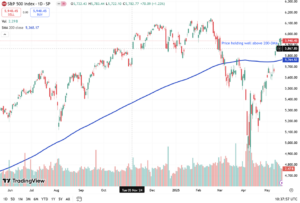Japan’s economy shrank more than expected in the first quarter of 2025, marking its first contraction in a year. Government data released on Friday showed that GDP fell by 0.2% from the previous quarter, missing forecasts that had projected only a 0.1% decline.
On an annualized basis, the contraction was even sharper at 0.7%, far below the expected 0.2%. The main driver behind the weak performance was a 0.6% drop in exports, which shaved 0.8 percentage points off total GDP. Japan’s export-heavy economy continues to feel the impact of global trade tensions, particularly from recent U.S. policy shifts under President Donald Trump.
Despite the quarterly decline, Japan’s economy still showed strength on a year-over-year basis. GDP grew by 1.7% compared to the same period last year, the highest growth rate since Q1 2023 and an improvement over Q4’s 1.3%.
Still, concerns remain. The Bank of Japan (BOJ) recently warned that the economy could weaken further due to global trade disruptions, declining exports to the U.S., and lower corporate investment. In its latest report, the BOJ said negative demand shocks are expected to weigh on both business activity and household consumption.
The central bank highlighted that U.S. tariff policy could continue to exert downward pressure on Japan’s economic growth and inflation. Nevertheless, the BOJ remains committed to its goal of raising the policy rate, as some members believe the 2% inflation target is likely to be sustained. Inflation in Japan came in at 3.6% in April, continuing a three-year streak of staying above target.
However, not all policymakers are confident. Some BOJ board members stressed the need for caution, urging the bank to remain flexible and consider both upside and downside risks in its policy decisions.
The BOJ kept its benchmark rate unchanged at 0.5% during its May 1 meeting, marking the second straight session without a change. This cautious approach reflects the delicate balance the central bank must maintain between curbing inflation and supporting economic recovery.
Meanwhile, trade negotiations between Japan and the U.S. continue, but so far no significant breakthrough has been reported. The uncertain trade outlook, combined with a weaker yen and rising energy costs, presents a complex set of challenges for Japan’s economic future.





